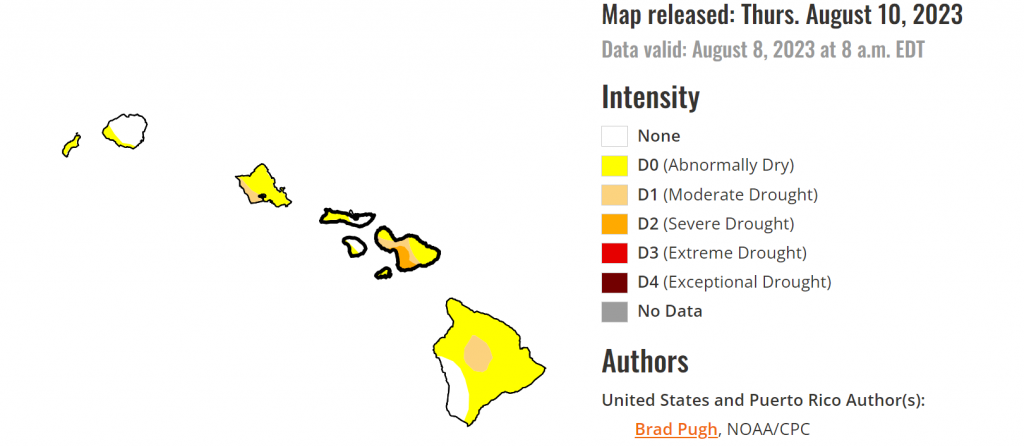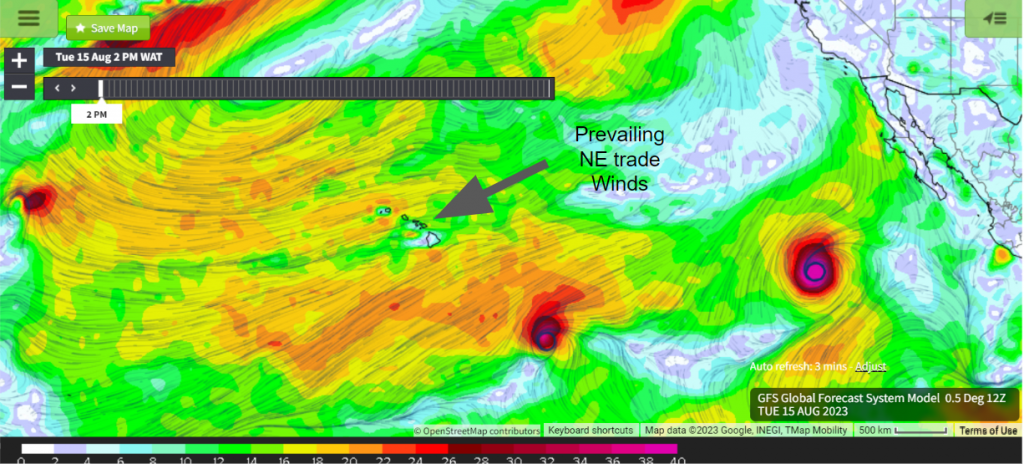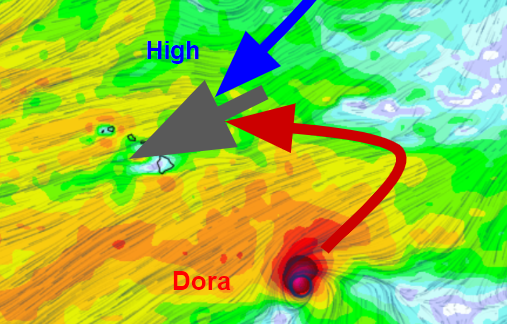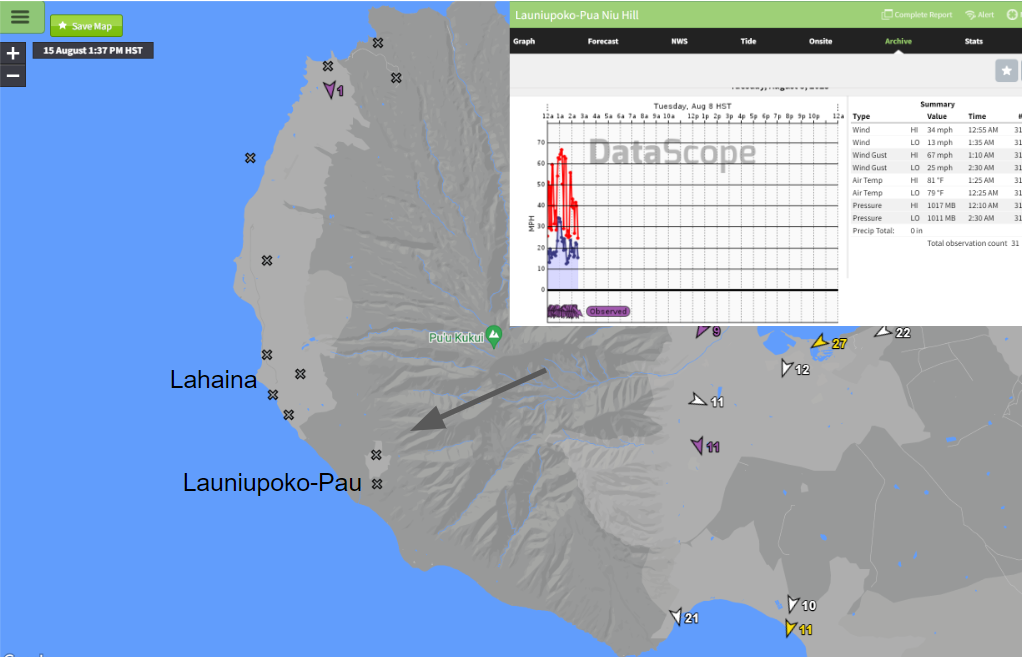The death toll from the Maui fires continues to climb but already it is one of the top ten most deadly fires in US history. The video below from Glenn Donovan shows his view of those fires as he vacationed on the island. These deadly fires developed as multiple conditions combined to bring the “Perfect Firestorm”.
First, the island of Maui has been experiencing drought conditions. The U.S. Dought Monitor puts the Lahaina area in severe drought. This area has been at this level of drought since the start of the year. Consequently the vegetation is under severe stress due to the lack of water. The plants were tinder-dry.

Second the winds were much stronger than normal. This area sees a prevailing wind from the NE. That direction would drive any fire toward the Lahaina area. It is not unusual to see afternoon winds near 20 mph in the summertime in this area but on Aug 8 the typical trade winds were enhanced by the passing of Hurricane Camille.

In the past month the Eastern Pacific has become active with tropical storms. Hurricane Dora was one of those storms. The map (above) shows two storms, Greg and Fernanda following a similar path. Dora passed about 500 miles to the south of Hawaii. At the same time a strong High pressure zone was sitting to the north. The clockwise circulation around the High and the counter clockwise circulation around Dora converged over Hawaii rapidly enhancing the already strong trade winds.

Another factor though added to strengthen winds for Lahaina. The already strong winds on the eastern shore crossed the island and were then pushed downslope. This further accelerated winds. You can see the tracing from Launiupoko-Pau showing gusts near 70 mph in the morning. But then you will notice that the tracing stops.

These strong winds whipped the area throughout the day but the fires and electical failure caused the stations to fail. The “x”s on the map above are station points that are no longer reporting. All of these stations went out during the fire and we continue to be without data from this area.
